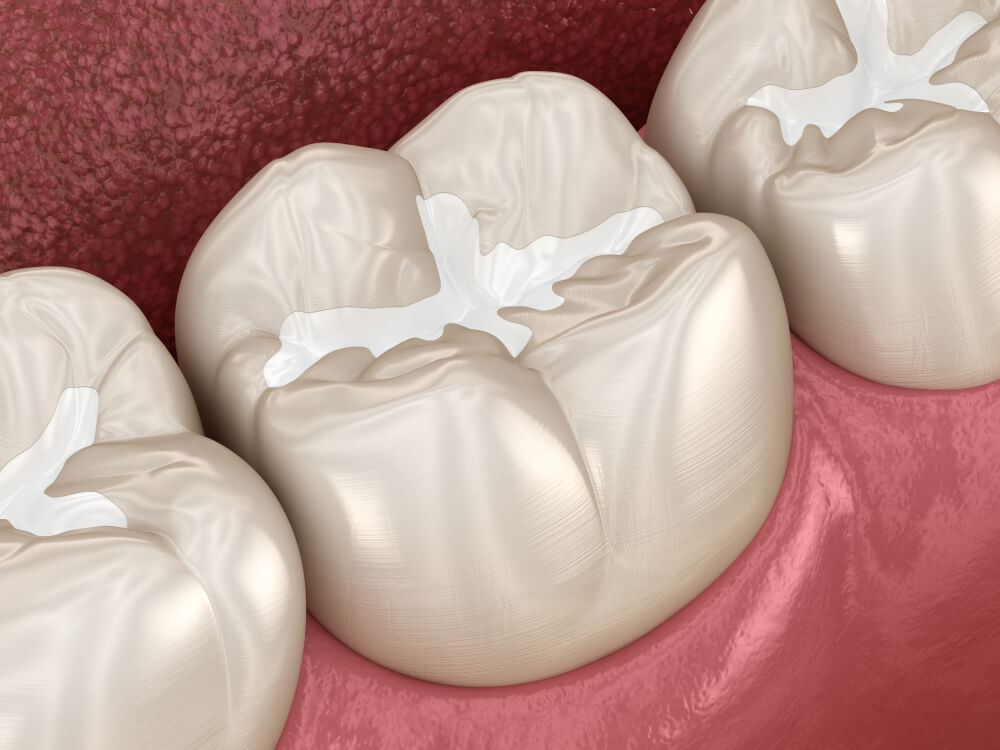What Are Dental Sealants?
A dental sealant is a thin plastic coating that is applied to the grooves on the chewing surfaces of the back teeth to protect them from tooth decay. Most tooth decay in children and teens occur on these chewing surfaces of the molars
Which Teeth Are Suitable For Sealants?
Permanent molars are the most likely to benefit from sealant, due to the deep grooves these teeth normally exhibit. It is best if the sealant is applied soon after the teeth have erupted, before they have a chance to decay. First molars normally erupt around 6 years and second molars around 12 years of age.
How Are Sealants Applied?
Applying sealants does not require any drilling or removal of tooth structure. The process is short and easy. After the tooth is cleaned, a special gel is placed on the chewing surface for a few seconds. The tooth is then washed off and dried. Then, the sealant is painted on the tooth and hardened in the grooves of the teeth with a special light.
Are They Visible?
Sealants can only be seen up close. They can be clear, white, or slightly tinted, and usually are not seen when a child talks or smiles.
Will A Sealant Make Teeth Feel Different?
As with anything new that is placed in the mouth, a child may feel the sealant with the tongue. However, they are very thin and only fill the pits and grooves of molar teeth.
How Long Will A Sealant Last?
A sealant can last for as long as 5 to 10 years. Sealants will be checked at your regular dental appointment and can be reapplied if they are no longer in place.
Will A Sealant Replace Fluoride For Cavity Protection?
No. Fluoride, such as those used in toothpaste, mouth rinse, and community water supplies also help to prevent decay, but in a different way. Sealants keep germs and food particles out of the grooves by covering them with a safe plastic coating. Sealants and fluorides work together to prevent tooth decay.
How Do Sealants Fit Into A Preventive Dentistry Program?
Sealants are one part of a child’s total preventive dental care. A complete preventive dental program also includes fluoride, twice-daily brushing, wise food choices, and regular dental care.
Why Is Sealing A Tooth Better Than Waiting For Decay And Filling The Cavity?
Decay damages teeth permanently. Sealants protect them. They can save time, money, and the discomfort sometimes associated with dental fillings. Fillings are not permanent. Each time a tooth is filled, more drilling is done and the tooth becomes a little weaker.


